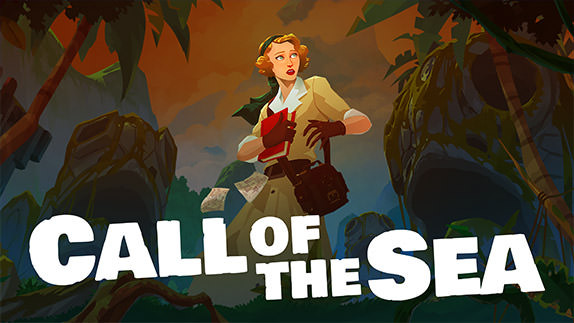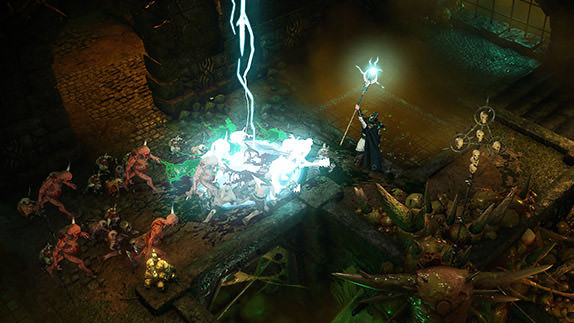The Order: 1886 Review

 By Kevin Mitchell | February 25, 2015
By Kevin Mitchell | February 25, 2015
Cinematic immersion and storytelling certainly have a place in the industry, but Ready at Dawn's first original IP The Order: 1886, may have too much flare and not enough substance. Using the legend and lore from King Arthur and his Knights of the Round Table, the Knights have survived for centuries through mystical tonics worn around their neck and are alive during an alternate Victorian-era timeline of London. The city is on the verge of a full-scale rebellion and the rebels have aligned themselves with the foul, half-breed creatures known as the Lycan. These werewolves, among other creatures of the night, are the true enemies of The Order. Although the Knights are near immortal, others are ready to take their place if they fall in battle. Through the game's eight hours, you follow the story of Sir Galahad, slowly pacing your way across the streets of London, the inner workings of airships, and other points of interest above and below the city streets.
Presented as a cinematic experience complete with letterbox formatting, The Order: 1886's technical achievements are a triumph to the genre. The presentation comes with a price however, and in this case causes the gameplay to take a backseat to the storytelling. The narrative takes almost half the game before it gets interesting and the last few chapters are relatively short. The ending may answer one bullet point on a long list of questions, but leaves the story open for DLC or a sequel. Perhaps the true experience the developers wanted to create became too unwieldy and sacrifices had to be made, but in a game where the story is being pushed more so than gameplay, ending the game on a cliffhanger is a poor decision.
The third-person combat relies on a standard cover system; you'll find conveniently placed waist-high objects to hide behind as soon as you enter action areas. The objects you hide behind slowly degrade by the hailfire of bullets you face from the rebels, who remain aggressive throughout. If you aren't careful, they will flank your current position and flush you out. Most of the time you'll face charging rebels with body armor and shotguns, capable of killing you in only a couple of shots. Thankfully transitioning between cover points is smooth and satisfying. The Blacksight mechanic allows you to mow down multiple enemies in a temporary suspended-like state, similar to Bullet Time in other titles. It's not a necessity to use it on the normal difficulty, but its usefulness shines in the higher difficulties.
The weapons are varied enough, from standard pistols and shotguns to the more inventive fare through the help of a young and inspiring Nikola Tesla, who develops some of the more intriguing, scientific equipment. The rare occurrence of werewolves are a highlight, but their sporadic use is disappointing, especially when one-on-one battles are concluded with a QTE. Quick-time events aren't limited to boss fights and you'll spend too much time dealing with timed button presses or mashing buttons to transition out of a cinematic, deal a stealth kill, and all other melee encounters. The action is enjoyable to watch, but failing a single prompt in a long chain of commands is a good way to watch yourself getting shot in the face and having to start over.
The game limits the amount of weapons you are allowed to carry at any moment by tying them to the directional pad. Two are reserved for frag and smoke grenades and left and right will switch between your handgun or more powerful gun, such as the lightning shooting Arc Cannon or Autorifle. You'll be scavenging for ammo after each engagement and grenades are a rare commodity. Sadly, the more satisfying and crazy weaponry are used in limited capacity. If every chapter put something new in your hands, it may have helped the combat feel fresh and exciting.
When you are not in combat, the pacing is limited as Galahad and the rest of the team casually make their way through a beautifully realized London, with zeppelins idling overhead and lightning that brings the environments to life. Everything has a gray overtone to it, helping to capture the gritty and dirty nature of the age, but soft lighting and color accents will have you stopping to admire the scenery. Considering how slowly you move between the action, it feels like Ready at Dawn wants you to do exactly this.
Interactions are kept to a minimum within the environment, but you will be free to pick up and examine certain items, mostly letters and random objects. In fact, you won't be able to put some objects down until you awkwardly rotate them around in your hand long enough to trigger a scene. Crates and carts can be pushed into new positions, allowing your team to access out-of-reach areas, and lockpicking mini-games seem to be the new must-have for any game.
The Order: 1886 seamlessly transitions in and out of the action, with no load times or on-screen indicators that you are no longer controlling the character. The camera may pan around, which is a good indication that you should be watching instead of playing, but button prompts occur more frequently than they should during these sequences. The visual quality doesn't change depending on what is happening on screen, so the game never has moments where I missed my cue that I was once again controlling the character.
Simply Put
The Order: 1886 will embrace you in an unmatched cinematic experience and the shooting mechanics are solid. The overall short time you are actually "playing" the game is a major disappointment. There are no advancement options for weapons and the only collectibles in the game are audio logs, photographs and newspapers. There are trophies for finding them all, but no indicator of which items you may have missed. Let me be clear: I did enjoy my time spent with the title, but with no clear reason to trek through the adventure multiple times, combined with the fact it can be beaten in a single afternoon, The Order: 1886 is a rental at best.
Note: The Order: 1886 was reviewed on PlayStation 4. A digital copy of the game was purchased by SelectButton.




